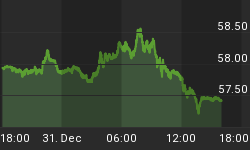Treasury Bonds are called firmer and stocks are slightly lower, while gold continues to soar amid heavy selling pressure against the U.S. Dollar.
The Fed gave T-Bond traders the green light yesterday to resume their buying spree while stock traders are acting as if equities are overvalued.
December Treasury Bonds were trading firmer on Tuesday even before the FOMC hinted that the Fed was gearing up for another round of quantitative easing.
Early in the trading session T-Bonds pierced a downtrending Gann angle at 131'27, indicating a sign of strength and the potential for a retracement back to 132'12 to 133'04.
After the Fed hinted that it is strongly considering additional quantitative easing, T-Bond traders took the market sharply higher before finally reaching its first retracement zone objective.
If upside momentum continues on Wednesday, December T-Bonds should make a run at a downtrending Gann angle at 133'03. A Fibonacci retracement level comes in at 133'04, making this an important resistance cluster and upside target.
The December E-mini S&P market failed to hold on to its gains after a mid-session breakout to the upside and finished lower for the day. The chart pattern formed was a classic closing price reversal top. A trade through Tuesday's low at 1130.25 will confirm the reversal and set up a possible 2 to 3 day break. The first downside target is an uptrending Gann angle at 1008.50.
This type of pattern often triggers the start of a 50% retracement of the last rally. Based on the range of 1032.50 to 1144.00, a sell-off on Wednesday may trigger the start of a break back to 1088.25.
The U.S. Dollar Index is trading sharply lower overnight, pressured mainly by a strong rally in the Euro.
In overnight trading, the Euro continues to mount an impressive rally. On Tuesday, the Federal Open Market Committee gave the "ok" to traders to go long as it hinted that the Fed is ready to execute whatever it takes to keep the U.S. economy from derailing.
Technically, the December Euro crossed over to the bullish side of a steep uptrending Gann angle at 1.3284. Currently, this market is poised to challenge the August 6 top at 1.3334. A break out above this level is likely to trigger an acceleration to the upside.
A strong overnight rally has triggered a sharp move to the upside, putting the December British Pound in position to challenge a key resistance cluster at 1.5728 to 1.5736.
The first upside target is a swing top at 1.5728. A trade through this price will turn the main trend to up on the daily chart. A trade through this top will also put the market on the bullish side of a Fibonacci level at 1.5729. In addition, regaining an uptrending Gann angle at 1.5736 could trigger a fast acceleration to the upside.
Based on the chart formation, upside momentum could drive the British Pound into a downtrending Gann angle at 1.5832 today.
The December Japanese Yen continues to work higher overnight following Tuesday's Federal Open Market Committee announcement. The FOMC strongly hinted at another round of quantitative easing at its next meeting in November. This decision helped strengthen the Yen. It also provided proof that last week's intervention by the Bank of Japan and the Japanese government has most likely been absorbed by the market.
The Japanese Yen hesitated a little as it approached 1.1745, but once it became clear that the central bank was not lurking at this price level, buyers were able to push the market higher. Traders did, however, note that they suspect another round of intervention is imminent, but no one is sure when and where this will take place.
Based on the current chart pattern, traders should watch for a possible correction to 1.1863 to 1.1913. A downtrending Gann angle also comes in at 1.1827. This price is being tested this morning.
Traders should note that China has been a big buyer of Japanese Bonds, helping to support the Yen. In addition, a sizeable rally in the Yen will indicate that Japanese officials need the cooperation of other central banks in order to make this wave of intervention successful. The fact that the U.S. Fed is likely to apply another round of quantitative easing, thereby strengthening the Yen, is a strong indication that the Bank of Japan and the Federal Reserve are not on the same page when it comes to the correct valuation of the Yen.
















